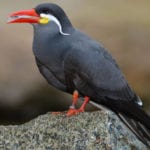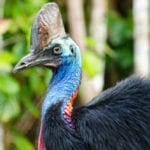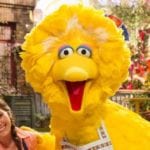 Our World
Our World  Our World
Our World  Movies and TV
Movies and TV The 10 Coolest Stars to Set Sail on The Love Boat
 History
History 10 Things You Didn’t Know About the American National Anthem
 Technology
Technology Top 10 Everyday Tech Buzzwords That Hide a Darker Past
 Humans
Humans 10 Everyday Human Behaviors That Are Actually Survival Instincts
 Animals
Animals 10 Animals That Humiliated and Harmed Historical Leaders
 History
History 10 Most Influential Protests in Modern History
 Creepy
Creepy 10 More Representations of Death from Myth, Legend, and Folktale
 Technology
Technology 10 Scientific Breakthroughs of 2025 That’ll Change Everything
 Our World
Our World 10 Ways Icelandic Culture Makes Other Countries Look Boring
 Our World
Our World 10 Ways Your Christmas Tree Is More Lit Than You Think
 Movies and TV
Movies and TV The 10 Coolest Stars to Set Sail on The Love Boat
 History
History 10 Things You Didn’t Know About the American National Anthem
Who's Behind Listverse?

Jamie Frater
Head Editor
Jamie founded Listverse due to an insatiable desire to share fascinating, obscure, and bizarre facts. He has been a guest speaker on numerous national radio and television stations and is a five time published author.
More About Us Technology
Technology Top 10 Everyday Tech Buzzwords That Hide a Darker Past
 Humans
Humans 10 Everyday Human Behaviors That Are Actually Survival Instincts
 Animals
Animals 10 Animals That Humiliated and Harmed Historical Leaders
 History
History 10 Most Influential Protests in Modern History
 Creepy
Creepy 10 More Representations of Death from Myth, Legend, and Folktale
 Technology
Technology 10 Scientific Breakthroughs of 2025 That’ll Change Everything
 Our World
Our World 10 Ways Icelandic Culture Makes Other Countries Look Boring
10 Shocking or Amazing Bird Behaviors
We are familiar with many bird behaviors and lifestyles such as migration, foraging strategies and nesting. However, birds are among the most mysterious, highly evolved and yet primitive life forms on the planet. There are some with behaviors and abilities so bizarre, shocking, horrible or even human like that we will be astounded or disturbed as we realize how little we know about the evolved dinosaurs known as birds…
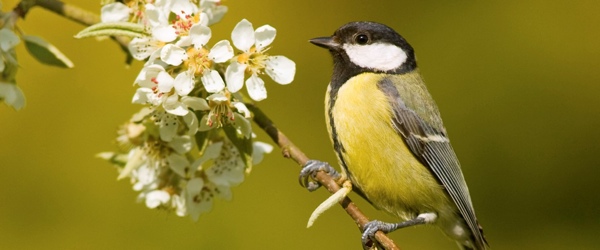
Chickadees are diminutive yet intelligent garden songbirds smaller than a sparrow, with a cheerful, innocent appearance. However, one would be advised to reconsider these tiny birds. European Great Tits have been observed entering hollow trees and bludgeoning roosting bats to death before dragging them out to eat. The bats had their heads pecked open, and were mostly targeted during the winter months, according to Europe’s Max Planck institute of Ornithology, Europe’s key bird research centre. This extreme predatory behavior is nothing short of incredible for a tiny, colorful European garden songbird, proving that many weird and creepy mysteries may be hidden behind the appearance of any apparently innocent little songbird.
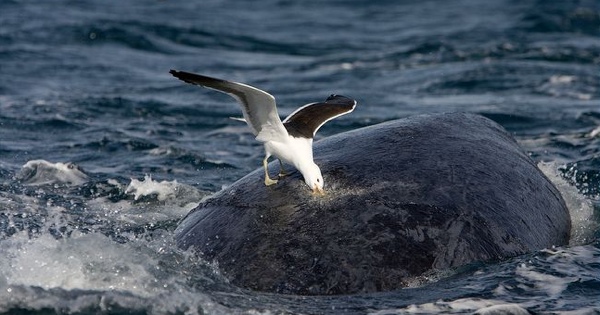
We normally think of “Seagulls” as coastal birds that eat fish, and at times may be a minor nuisance, or a fascination to birders who take great pleasure in sorting out obscure gull species. Off Argentina, however, gulls are more than living up to their scary depiction in Alfred Hitchcock’s Movie “The Birds” by targeting much larger prey than herring. Giant Right Whales that measure over 50 feet in length are being repeatedly targeted by increasing populations of Kelp Gull, a massive, fish eating species with ominous dark plumage. As the whales surface, the gulls have learned to swoop down and sheer large pieces of flesh and blubber out of the whales, in a horror movie like scene. Human garbage disposal has been blamed for the population expansion, but cannot fully explain the terrifying actions…
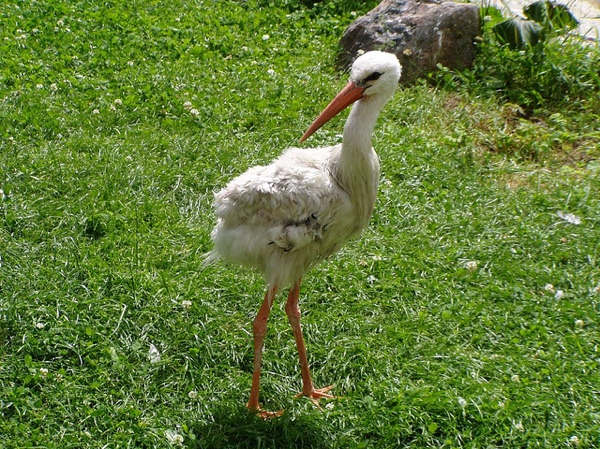
It’s a good thing Storks do not bring us our babies after all, or they might be instructed to run to social assistance if they didn’t like the dinner offered. In a carefully researched study, scientists in Spain discovered that around 40 percent of European White Stork nestlings abandoned their parents partway through development and promptly snuck into a neighboring stork family’s nest. The motivation? Chicks that were not completely satisfied with their parents hunting skills were running away from home in hopes of finding a better meal with the neighborhoods. The grass is always greener on the other side…
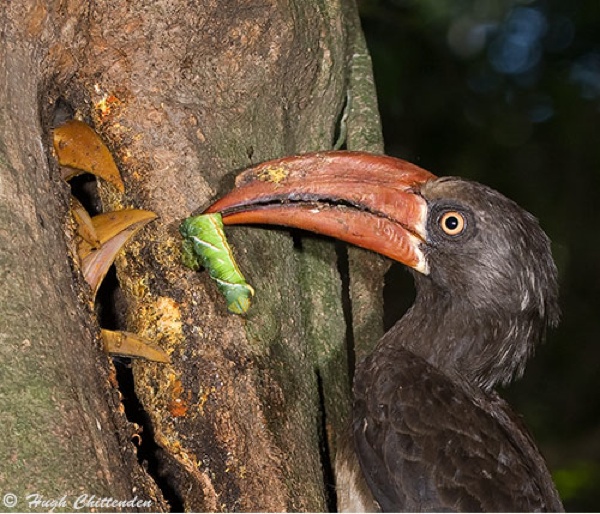
Indian Hornbills are the old world evolutionary equivalents of Toucans, and resemble a cross between a woodpecker and the previously mentioned stork. While many female birds contribute substantially to the construction of a nest, these giant forest birds receive a little help from the male. After locating a suitable nest cavity, the female is sealed in by the male, who builds a barrier of mud, bird droppings and sticks. Only the bill of the female and the young can reach through to receive the frogs, mice and fruit brought by the male. This bizarre imprisonment lasts until the brood is ready to fledge, and is thought to provide protection against nest predators. It also prevents the female from mating with other males…
The bizarre Palm Cockatoo is a denizen of the Australian and New Guinean rainforest that looks for all the world like a punk rocker with its striking plumage and outrageous “Mohawk” head feathers. This giant parrot is not just playing the part, it is the king of avian rock music. When a male Palm Cockatoo seeks a mate, he shears off a sizable branch with his massive hooked bill capable of shattering a broom handle, and then flies to a hollow nest tree. Holding his manufactured drumstick in his foot, the avian rock star beats the stick against the tree trunk, giving an impressive percussion performance and looking like he is auditioning for a position with The Misfits. The female soon arrives if she likes what she hears…
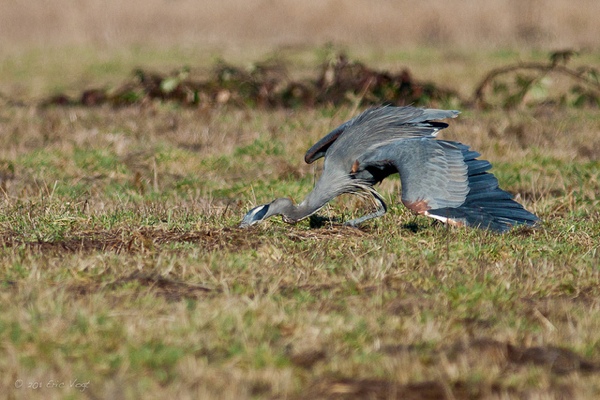
Jatinga is a village located on an Indian plateau, next to sizable cliffs. The town has become notorious among travel sources due to the frequent mass accidents where numbers of Asian birds including Tiger Herons, Pittas, Hawks and Egrets crash into the ground in a dramatically confused state. The “mass impacts” leave the birds that survive impact highly vulnerable to all manner of dangers, and as a result, many exotic bird species were being mercilessly harvested. Although the cause of the bizarre phenomenon has never been fully determined, conservationists led by the famous naturalist E.P. Gee and Indian bird ornithologist Salim Ali initiated an expedition that resulted in many villagers being taught to help the downed birds.
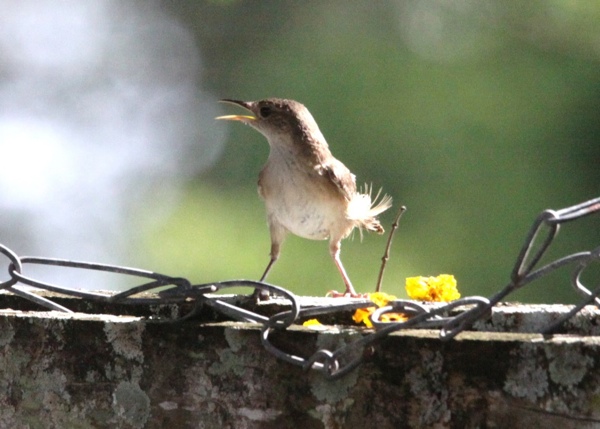
House Wrens are the stereotypical little brown bird in appearance. However, these 4 inch long residents of North American woodlots and gardens are in fact saboteurs with truly industrial capacity. Feeding mostly on insects, House Wrens are constantly hunting, defending territory, and….destroying other birds’ nests. Many male birds will chase away males of their species, but in the nesting season, male House Wrens become hell bent on not only chasing away, but in fact eradicating entire families of other birds. Sneaking up to a bluebird, finch or swallow nest, the “evil” House Wren male pierces the eggs, and then proceeds to trash the nest site. He will do this to any nest he can, all the while establishing several of his own nests, each with its own female.
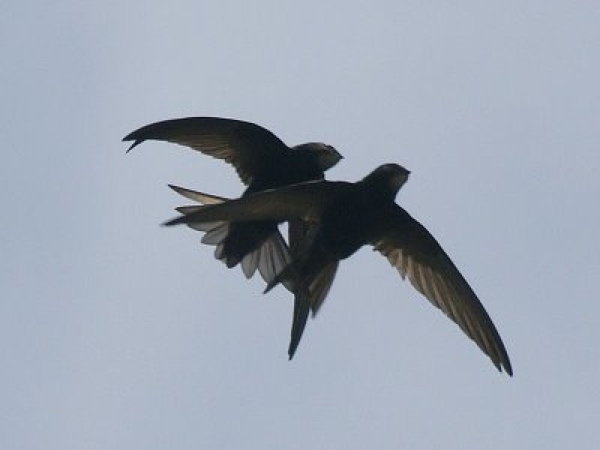
Bird reproduction is both defined by egg laying, and being subject to many jokes. Whereas most birds do the deed in a hollowed out tree, on a branch, or out in the case of gulls, in public on a sandbar, swallow like relatives of Whip-poor Wills and Hummingbirds known as Swifts are dedicated members of the Mile High Club. Lacking effective perching skills, Swifts have mastered the air to the point where they can fly across a continent in 3 days, sleep on the wing, and yes, copulate. Swifts simply do not stop for sex, and after a spectacular, 200 mile per hour display flight, the male and female swift rush together and complete the act belly to belly at an altitude of over 2,000 feet and faster than many small aircraft.
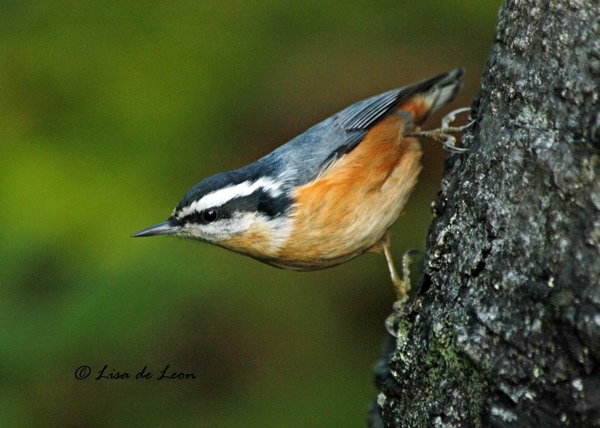
Red-breasted Nuthatches are weird birds to begin with. Native to Canada’s Boreal woodlands and Pacific Rain forests, these strange creatures have hooked claws and bent necks allowing them to walk headfirst down a tree trunk, poking for insects and centipedes. Nesting in a tree, the bird does not want any of these potentially venomous creatures invading its nest. Therefore, the nuthatch painstakingly installs a ring of thick, toxic conifer resin around the edge of its nest, where it traps and kills any predator or pest that comes near. To avoid getting caught in its own booby trap, nuthatches are known to fly strait into their nests without stopping, as they apparently prefer to risk a crash than get captured by their pitch.
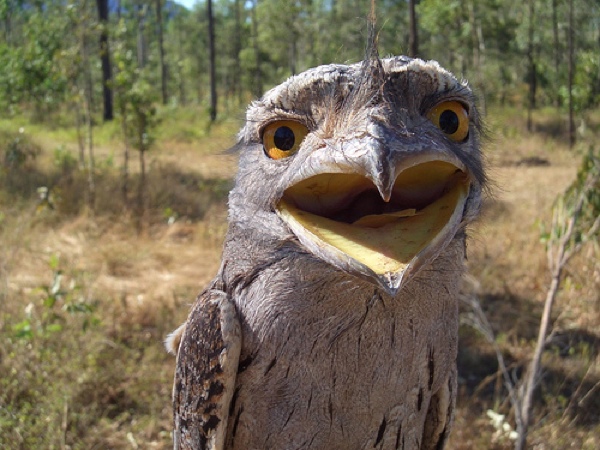
Tawny Frogmouths are a bizarre Australian bird that inhabits Eucalyptus woodlands where prey is abundant. Frogmouths resemble owls, but are in fact giant, awesome and rather creepy relatives of the Swifts previously mentioned. Frogmouths do not actively hunt, but rather they stand upright in a tree, perfectly resembling an old branch. When a small bird, frog, lizard or dragonfly approaches, the enormous gaping mouth expands open, quickly drawing in the hapless animal. Within a fraction of a second, the massive bill snaps shut with a loud click that can be heard 100 meters away. The prey is then forced back and swallowed whole. Tawny Frogmouths do not actually do anything except remain invisible and snap shut like a Venus Flytrap, making them among the creepiest birds on Earth.
